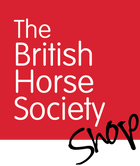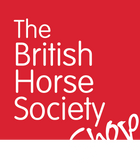Former international event rider Eric Smiley has brought along his own top-level
horses for decades. Now he taps his immense knowledge to help riders whose horses
may not have had “the right start.”
Every horse comes with his own “baggage” behaviour or training issues, minor or significant, that may be difficult to pinpoint or resolve. In these pages, Smiley addresses the most common problems he has seen over the years in dressage, eventing, and show jumping, including:
- Problems with head and neck position.
- Connection issues.
- Failure to follow the rules of forward, straight, and regular.
- Difficulty with collection.
- Lack of consistency.
Smiley teaches readers how to identify what isn't working by looking at how things
should work. Then he walks us through dismantling and reassembling the issues,
providing an easy-to-follow system for determining what's potentially wrong with a
horse and choosing sensible exercises for fixing it.
Completely updated and revised, the third edition of this essential textbook describes the basic genetics of the horse including coat colour, parentage, medical and population genetics, cytogenetics, performance, breeding systems and genetic conservation, as well as the many recent advances in genomics.
New for the third edition:
This authoritative text remains one of the key sources of information for basic genetic principles and their specific applications to the horse, and is essential for students of equine studies, animal breeding and veterinary science, as well as horse breeders and owners.
Authors: Ernest Bailey, Samantha A. Brooks.
A thoroughly updated edition of this essential reference guide for physiotherapists and physical therapists, looking to apply the proven benefits of physiotherapy to the treatment of companion and performance animals.Seven new chapters provide greatly expanded coverage of practical treatment and rehabilitationIncludes reviews of different physiotherapy techniques, drawing on both human and animal literatureDiscusses approaches in small animal medicine as well as for elite equine athletesProvides applied evidence-based clinical reasoning model, with case examplesNow in full colour with many more illustrations
It is no secret that speed, stamina, jumping ability, and athletic prowess depend on the horse's physical ability to perform. However, the world has seen many ‘great' athletic bodies, human and horse, fail to reach their true potential, while others, perhaps thought to be less great in form and function, reach the pinnacle of their sport or discipline. In the world of human athletes, we might claim hard work, ‘grit', or ‘heart' as the force greater than muscle that propels them to the top. But the horse doesn't have performance goals in the way we do, so what is it that motivates one racehorse to leave the rest of the field behind to cross the finish line first? In these pages, Kerry explains how it is possible - initially by using an Emotional Conformation Profile - to determine if a horse has what it takes inside him to make what he has on the outside great. Can your racing prospect handle distance? Does your event horse have the ‘finish' to clear that last enormous cross-country obstacle when his legs are tired? Is your horse capable of maintaining focus in the face of large crowds and multiple distractions? More importantly, he tells you how to develop specific training protocols towards given goals, thus enabling a horse to perform at his very best.










